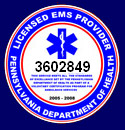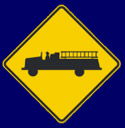|
|

| 14 Year Incident Stats |
| Fire | EMS | Total |
| 2021 | 168 | 706 | 874 |
| 2020 | 143 | 584 | 727 |
| 2019 | 179 | 632 | 811 |
| 2018 | 194 | 620 | 814 |
| 2017 | 143 | 633 | 776 |
| 2016 | 190 | 670 | 861 |
| 2015 | 166 | 601 | 767 |
| 2014 | 187 | 541 | 728 |
| 2013 | 135 | 516 | 651 |
| 2012 | 165 | 461 | 626 |
| 2011 | 174 | 506 | 680 |
| 2010 | 178 | 526 | 704 |
| 2009 | 179 | 481 | 660 |
| 2008 | 171 | 498 | 669 |
| Total | 2372 | 7975 | 10348 |
| Historical Totals |
| Fire Calls (1955-2021) | 5550 |
| EMS Calls (1958-2021) | 17720 |
| Total | 23270 |



| Web Counters |
Visitors Today:
254 |
Visitors Since
May 15, 2007:
2,630,113 |
|
Use of Website Material:
|
| Duplication of text, photos or any other content published on this website, is prohibited without permission of the White Horse Fire Company. (Content used from sources outside of the Company are credited to the author and/or photographer if known.) |
|
|
|
|
|
|
|
|
Electrical Fires & Electrical Fire Safety
Electrical Fires
Electrical distribution equipment (i.e., wiring, switches, outlets, cords and plugs, fuse and circuit breaker boxes, lighting fixtures and lamps) was the third leading cause of home fires and the second leading cause of fire deaths in the United States between 1994 and 1998.
Facts & figures
- There were 38,300 reported home electrical fires in 1998, resulting in 284 deaths, 1,184 injuries and $668.8 million in direct property damage.
- The statistics below are based on annual averages from 1994-98:
- Ground fault or shot circuit was the leading cause of electrical distribution fires.
- Fixed wiring caused one-third of home electrical distribution fires.
- Cords and plugs caused 17% of home electrical distribution fires and 28% of related deaths.
Source: NFPA's U.S. Home Product Report, Appliances and Equipment Involved in Fires, January 2002.
Safety tips:
- Replace or repair loose or frayed cords on all electrical devices.
- Avoid running extension cords across doorways or under carpets.
- In homes with small children, electrical outlets should have plastic safety covers.
- Follow the manufacturer's instructions for plugging an appliance into a receptacle outlet.
- Avoid overloading outlets. Consider plugging only one high-wattage appliance into each receptacle outlet at a time.
- If outlets or switches feel warm, shut off the circuit and have them checked by an electrician.
- When possible, avoid the use of "cube taps" and other devices that allow the connection of multiple appliances into a single receptacle.
- Place lamps on level surfaces, away from things that can burn and use bulbs that match the lamp's recommended wattage.
Electrical Fire Safety
The United States Fire Administration (USFA) would like consumers to know that there are simple steps you can take to prevent the loss of life and property resulting from electrical fires.
THE PROBLEM
During a typical year, home electrical problems account for 67,800 fires, 485 deaths, and $868 million in property losses. Home electrical wiring causes twice as many fires as electrical appliances.
THE FACTS
December is the most dangerous month for electrical fires. Fire deaths are highest in winter months which call for more indoor activities and increase in lighting, heating, and appliance use. Most electrical wiring fires start in the bedroom.
THE CAUSE
Electrical Wiring
- Most electrical fires result from problems with "fixed wiring" such as faulty electrical outlets and old wiring. Problems with cords and plugs, such as extension and appliance cords, also cause many home electrical fires.
- In urban areas, faulty wiring accounts for 33% of residential electrical fires.
- Many avoidable electrical fires can be traced to misuse of electric cords, such as overloading circuits, poor maintenance and running the cords under rugs or in high traffic areas.
Home Appliances
- The home appliances most often involved in electrical fires are electric stoves and ovens, dryers, central heating units, televisions, radios and record players.
SAFETY PRECAUTIONS
- Routinely check your electrical appliances and wiring.
- Frayed wires can cause fires. Replace all worn, old or damaged appliance cords immediately.
- Use electrical extension cords wisely and don't overload them.
- Keep electrical appliances away from wet floors and counters; pay special care to electrical appliances in the bathroom and kitchen.
- When buying electrical appliances look for products which meet the Underwriter's Laboratory (UL) standard for safety.
- Don't allow children to play with or around electrical appliances like space heaters, irons and hair dryers.
- Keep clothes, curtains and other potentially combustible items at least three feet from all heaters.
- If an appliance has a three-prong plug, use it only in a three-slot outlet. Never force it to fit into a two-slot outlet or extension cord.
- Never overload extension cords or wall sockets. Immediately shut off, then professionally replace, light switches that are hot to the touch and lights that flicker. Use safety closures to "child-proof" electrical outlets.
- Check your electrical tools regularly for signs of wear. If the cords are frayed or cracked, replace them. Replace any tool if it causes even small electrical shocks, overheats, shorts out or gives off smoke or sparks.
Finally, having a working smoke alarm dramatically increases your chances of surviving a fire. And remember to practice a home escape plan frequently with your family.
|
|
|

